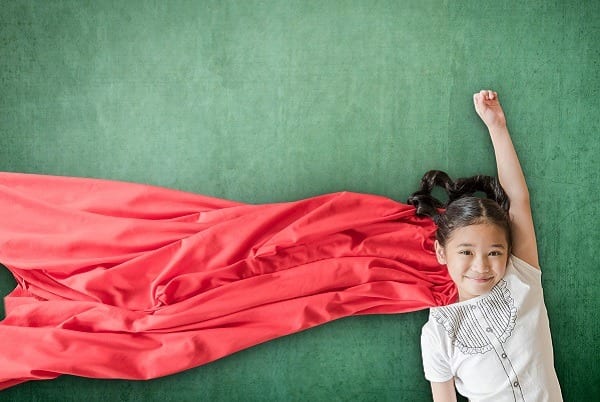Today, as we celebrate the 7th annual International Day of the Girl, we can report that girls are more likely to complete their education, survive childhood and avoid marriage as children.
But millions of girls are still not faring well.
The international push towards progress for the rights of girls started in 1995 at the World Conference on Women in Beijing, where the countries attending adopted the Beijing Declaration and Platform for Action. The UN calls it the most progressive blueprint for the advancement of girl’s and women’s rights ever, focusing on eliminating discrimination in education, health, negative cultural attitudes and practices, as well as eradicating violence and economic exploitation. There is still plenty of work to do.
Below are some of the issues that are affecting girls across the world.
Child Marriage
Girls Not Brides reports that 12 million girls are married before the age of 18 every year, equating to 23 girls every minute, or nearly one every two seconds.
These children face higher risks of complications in pregnancy, experience more domestic and sexual violence, and are more likely to contract HIV/AIDS. Married girls are also unlikely to be at school, and with lowered education and economic opportunities, their families are more likely to stay in poverty.
Although the number of child marriages is decreasing, it isn’t happening fast enough, and if trends continue, 150 million more girls will be married as children by 2030.
Education
In 2016, 132 million girls around the world were out of school, including 34.3 million girls of primary school age, 30 million girls of lower secondary school age, and 67.4 million girls of upper secondary school age.
Of the 796 million illiterate people in the world, two thirds of them are women. Multiple studies have shown that education is the key to lifting communities out of poverty, and some countries lose more than US$1 billion a year by failing to educate girls to the same level as boys.
Each year of school increases girl’s future wages by 10-20%, while also encouraging them to marry later and have fewer children. In fact, some believe universal secondary education could virtually end child marriage. Higher levels of education have also been linked to reductions in infant mortality, maternal deaths, civil conflict and war.
Work
About 218 children between 5 and 17 are employed worldwide, but 152 million of these are believed to be victims of child labour.
Of all children who work, 73 million, almost 1 in 4, work in dangerous conditions, such as mines and sweatshops. Boys are more likely to be child labourers, however the UN notes that this could be a reflection of under-reporting, especially when it comes to domestic child labour.
Female Genital Mutilation
The World Health Organisation estimates that more than 200 million girls and women alive today have endured female genital mutilation, with this number increasing by about 3 million girls each year.
Most girls are cut before they turn 15, with some areas cutting girls when they’re only a few months old. Different FGM procedures are often combined, ranging from “nicks” to partial or total removal for the clitoris and labia, to stitching together the labia minora and/or majora.
It’s a practice that affects women and girls worldwide, including Australia and Europe, and isn’t homogenous across continents. There is no medical reason for the procedure and it can result in infections, severe complications in pregnancy, chronic pain, loss of sensation, and death. Although FGM has been declining worldwide with laws and cultural expectations evolving, some countries are still struggling .
When we talk about issues that influence gender equity on a worldwide level, we’re often talking about these sorts of issues, ones that affect hundreds of millions of girls. It’s easy to be complacent and think that girls in first world countries are pretty safe; they’re not dealing with their education being taken away or getting married by 15. However with some governments becoming increasingly populist, children of colour, especially girls, are still in danger.
Some specific areas of note in 2019:
America
More than 2000 children are being held by the US Border Patrol at any given time, spending weeks in facilities without adequate food, bedding, medical attention, and care.
From October 2014 to July 2018, the US government received over 4500 complaints of sexual abuse; with an increase in complaints since the Trump administration instated the separating migrant families at the border policy.
These include reports of abuse from other children, as well as up to 178 reports of staff members sexually assaulting children. One report details that girls were only given one sanitary pad per day of their period and didn’t have adequate access to showers.
Syria
The conflict in Syria has entered its 5th year, with children especially at risk.
With current figures stipulating that 7.6 million people in the country are internally displaced, Syrian families are forced to make perilous journeys to Europe.
The crisis has left 3 million Syrian children (principally girls) out of school. A new study, Education under Attack, reveals that several schools over the past few years “have been indiscriminately bombed, destroyed, commandeered by armed groups, or turned into weapons caches or torture centres”.
Syrian girls are also routinely exposed to exploitation, trauma and abuse in conflict settings. Children in the war zone continue to be the most vulnerable.
And in Australia…
Aboriginal and Torres Strait Islanders between 15 and 24 are almost 4 times more likely to commit suicide than other people their age, according to the ABS. Suicide is also the leading cause of death for Indigenous children between 5 and 17, and between 2014 to 2018, Aboriginal and Torres Strait Islander children made up almost a quarter of all child suicide deaths.
The beginning of this year saw 5 Aboriginal girls die by suicide in separate incidents in the first two weeks. They were aged 12-15.
Indigenous children are 10.1 times more likely than other Australian children to go into out of home care, where they are often separated from their family and culture, exposed to abuse, and suffer higher rates of mental health.
A 2018 Family Matters report found that Aboriginal and Torres Strait Islander children make up over 36% of all children living in out of home care in Australia. They are often taken from their families unnecessarily. Many are recognising these statistics are simply a continuation of the Stolen Generations.
There are still three children in Australian detention, including four year old Kopika, two year old Tharunicaa, and one year old Isabella. The youngest have been consistently unwell while in detention, with Isabella needing to stay in hospital with the flu for weeks, and Tharunicaa sustaining a head injury and rotting teeth.
International Day of the Girl is a time to discuss and reflect upon the efforts of governments and their response to issues impacting the world’s most vulnerable.
While some progress has been made, there are significant hurdles that still need to be overcome. Hopefully highlighting some of these issues and crises will help to propel those conversations and policy decisions.


